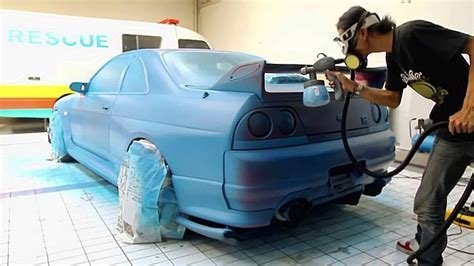
For classic cars, most like them because of their timeless beauty and the nostalgia they usually bring. But time has a way of wearing down such suspension parts that once afforded a smooth and responsive ride. If your classic car exhibits a tired suspension-huge amounts of bounciness, body roll, or a very harsh ride-it is due time to update. In this in-depth guide, a variety of suspension upgrades for classic cars, their benefits, considerations, and tips on how to install them will be discussed.
1. The Basics Behind Classic Car Suspension
Before actually getting into the upgrades, it is necessary to understand how the classic car suspension systems were designed originally. Most classic car suspension systems were designed with either leaf springs, coil springs, or a combination of each, coupled with shock absorbers working to regulate the wheel movement and keep the car riding smoothly.
1.1. Leaf springs:
A leaf spring now finds its application on older cars. A leaf spring is a type of spring that consists of a number of steel leaves laid on top of each other. The top one is the main spring. These leaves are bolted and clamped together to form the spring, allowing them to flex and absorb shocks. The pros associated with leaf springs are that they can be tough and simple in design, but on the lower sides, they may not offer comfort and exact handling as compared to the rest.
1.2. Coil Springs:
Coil springs are of a helical configuration and are more versatile, lending themselves easily to adjustment, which is why the modern vehicle most often utilizes this type of spring. They allow for a softer ride and improved handling compared with leaf springs. There are many different spring rates available that allow the coil spring to be tuned for specific driving styles and vehicle loads.
1.3. Shock Absorbers:
However, the damping of wheels’ up-and-down motion depends on shock absorbers, or dampers. In case of energy from bumps and other road irregularities, they dissipate it with a view to keeping excessive bouncing and loss of stability away. Commonly, a shock absorber can be hydraulic or gas-charged, which might get influenced by wear, age, and/or low fluid level.
2. Why Upgrade Your Classic Car’s Suspension?
Upgrading the suspension of a classic car provides several advantages in performance, handling, and driving experience.
2.1. Improved Handling and Performance:
The use of improved suspension components can greatly enhance the handling and performance of a car through better control of body roll, reduced tendencies toward understeer or oversteer, and improved responsiveness to steering inputs.
2.2. Improved Comfort and Ride Quality:
The improved design of modern suspension components, along with their superior materials, makes for a much better ride quality and comfort compared to the older systems. It absorbs road imperfections much better, reducing harshness and vibrations; this adds up to provide a much more comfortable and enjoyable driving experience.
2.3. Improved Safety:
A well-tuned suspension system primarily contributes to vehicle safety. Improved braking performance due to control over the vehicle and stability reduces skidding or swerving, boosting up the driver’s confidence altogether.
2.4. Increased Longevity:
More durable components that upgrade your suspension will add life to the classic car. Many of these components have been made much more durable with fewer tendencies for wear and tear; thus, they ensure a long-lasting and highly reliable suspension system.
3. Types of Suspension Upgrades for Classic Cars
The available options for suspension upgrades in classic cars are very diverse in nature, each coming with its pros and considerations.
3.1. Leaf Spring Upgrades:
Classic cars with leaf springs have the following upgrading options:
3.1.1. Replacement of Worn-out Springs:
Changing the old, worn-out, or fatigued leaf springs will greatly increase ride quality and improve handling.
3.1.2. Additional Leaves:
Adding more leaves in the spring pack makes it stiffer, thereby reducing body roll and improving the handling but can make the ride a bit harsher.
3.1.3. Replacement of Leaf Springs with Coils:
The conversion to coil spring suspension can have a considerable effect on comfort and handling, but this conversion is a lot more involved as it requires special parts and expertise.
3.2. Coil Spring Upgrades:
Where there are coil springs, several upgrade options exist for the classic car:
3.2.1. Replacement of Worn Springs:
Much like the leaf spring, replacing worn coil springs with new ones will definitely improve the ride and handling.
3.2.2. Sports Spring Upgrade:
These are higher-rate springs than standard; hence, they provide better handling and less body roll. On the flip side, however, they have a tendency to make the ride firmer.
3.2.3. Coilover Kits :
A coilover kit is an assembly of adjustable coil springs and shock absorbers. It provides great scope for fine-tuning of ride height, spring rate, and damping to provide the very best in performance.
3.3. Shock Absorber Upgrade:
Whatever type of spring system, upgrading shock absorbers can significantly enhance ride quality and handling. Modern up-to-date shock absorbers provide much greater damping control, quicker response times, and increased life-span.
3.3.1. Replacing Worn Shock Absorbers:
The replacement of worn-out shock absorber with a new one of similar type restores appropriate damping hence comfort.
3.3.2. Upgrading to Performance Shocks:
Performance shock absorbers are sportier in character and have increased damping force and quicker response times to offer better handling and control.
3.3.3. Adjustable Shock Absorbers:
In adjustable shock absorbers, the level of damping can be adjusted according to driving needs and requirements.
4. Considerations for Classic Car Suspension Upgrades
4.1. Driving Style and Usage:
Consider the kind of driving you generally do and for what purpose you will be using the car. If you drive daily and are in for comfort, prioritize the upgrades that provide a smooth and comfortable ride. If you want to get into performance driving, make sure to keep those enhancements priority that are all about improved handling and responsiveness.
4.2. Budget:
Suspension upgrades can be relatively inexpensive or very costly, depending on how involved the parts are and what quality they are. Decide on your budget upfront and investigate further based on those parameters.
4.3. Compatibility and Availability:
Make sure the upgrades chosen will work on the model and year of your classic car. Seek an expert or specialty retailer for their opinion regarding parts availability and compatibility.
5. Installation and Maintenance
Apart from choosing, installation of upgrades plays a very important role. It will be a good idea to let the work be done by an expert mechanic who deals with suspension systems in classic cars.
5.1. Installation Capabilities:
Professional installation makes all changes properly fitted and aligned; as such, these areas get maximum performance with fewer chances of any errors.
5.2. Periodic Maintenance:
After new installation, good maintenance thereafter will obviously be necessary to keep your suspension system in working condition: checking for wear and tear, fluid levels, adjusting settings where appropriate.
The suspension upgrade of your classic car should be a worthwhile investment; it makes driving much more pleasant and safe. With some basic knowledge, exploring options, and considering your needs, you should be able to choose the upgrades that take your classic to new levels of performance and comfort.




